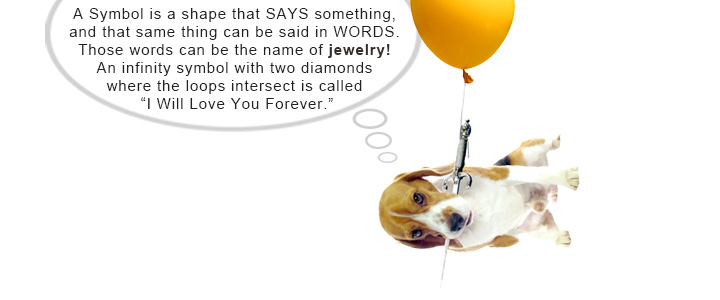There are four kinds of thought.
Verbal Thought is hearing a voice in your mind.
Analytical Thought is deductive reasoning that seeks to forecast a result.
Abstract Thought embraces fantasy and all things intangible.
Symbolic Thought relates the unknown to the known. The pattern-recognition power of the right brain connects new ideas [abstract thought] with known information [analytical thought] in the deductive reasoning left brain.
Symbolic Thought allows you to communicate the abstract by pointing to something familiar that shares an essential attribute with the abstraction you are trying to describe. This is the essence of all similes and metaphors.
“This is the forest primeval. The murmuring pines and the hemlocks, bearded with moss, and in garments green, indistinct in the twilight, stand like Druids of old, with voices sad and prophetic…”
– Henry Wadsworth Longfellow, Evangeline
“murmuring…”
“bearded…”
“garments…”
“Druids of old, with voices sad and prophetic…”
We’re talking about trees, remember?
Symbols are a language of the mind.
But that observation is just the beginning.
I have no proof of what I am about to tell you. So if you continue to read, please understand that I will be sharing nothing more than a deeply held pet theory of mine. I can reference no sources other than 25 years of experimentation and my conversations with Indy.
I believe the 4 types of thought are composed of 12 essential languages. Think of these 12 languages as the Operating System of the mind.
I believe Numbers are a language of the mind.
There are things that can be said in the language of Numbers that can be said in no other language. It is easier to learn mathematics when you think of Numbers as a language and the order of operations in math as the grammar and syntax of that language.
I believe Color is a language. Red and pink say different things.
Likewise, Shape is a language. A curve says something different than an angle.
Arranging colors and shapes so they speak to us is the essence of composition in photos, paintings and illustrations. It is the basis of architecture, Feng Shui, and industrial design (cars, jewelry, furniture, etc.) In fact, it underlies every type of visual communication that causes people to think and feel a certain way.
The human mind is given wings by its unique ability to attach complex meanings to sounds.
When you use words, you are rapidly choosing which of the 44 Phonemes of the English language shares an essential attribute with the fractional abstraction you are trying to describe.
Yes, the entirety of the English language is composed of just 44 sounds. This is not a pet theory of mine. This is settled science among the linguists of the world.
When you speak or write, you are connecting Phonemes together in rapid succession to create words – sounds – that represent what you are trying to communicate.
Did you know the written word has no meaning until it has been translated into the spoken word it represents? Graphemes, the letters of the alphabet and certain combinations of those letters like ch, sh, and th, merely represent the sounds – the phonemes – to which we attach deep meaning.
Look again at ch, sh, and th. Don’t say the names of the letters in your mind. Make the sounds that each of those two-letter combinations represent, “ch,” “sh,” “th”
Did it occur to you that “th” has two different sounds? Voiced “th” is the sound we hear in “the”. Unvoiced “th” is the sound we hear in “with”.
It is my belief that a basic understanding of the 12 Languages of the Mind will make you a better communicator. Indy Beagle gave you a glimpse of one of the Languages – Symbol – before he got carried away in today’s illustration. And I gave you a glimpse of 4 of them: Number, Color, Shape, and Phoneme.
Perhaps one day, if you are interested, we’ll tell you about the other seven.
Roy H. Williams
 Bob Dylan bought a copy of his book. So did James Woods and Simon Cowell. Mel Brooks was so impressed with author James Bailey that he wrote a cover blurb for Bailey’s newest book, The Diary of a Manic, OCD Bookseller. Yes, you read that correctly. James Bailey suffers from severe obsessive-compulsive disorder and was living out of his car when he went hunting for celebrities in Malibu, Santa Monica, and other fashionable Southern California towns. When he spotted stars, he pressed them to buy his book or at least accept a copy for free. “I never back off,” James says. And it’s true. James Bailey has sold thousands of books, one at a time, and this week he explains to roving reporter Rotbart how anyone can adapt his methods. Are you up for some outside-the-box thinking? Of course you are! This is MondayMorningRadio.com!
Bob Dylan bought a copy of his book. So did James Woods and Simon Cowell. Mel Brooks was so impressed with author James Bailey that he wrote a cover blurb for Bailey’s newest book, The Diary of a Manic, OCD Bookseller. Yes, you read that correctly. James Bailey suffers from severe obsessive-compulsive disorder and was living out of his car when he went hunting for celebrities in Malibu, Santa Monica, and other fashionable Southern California towns. When he spotted stars, he pressed them to buy his book or at least accept a copy for free. “I never back off,” James says. And it’s true. James Bailey has sold thousands of books, one at a time, and this week he explains to roving reporter Rotbart how anyone can adapt his methods. Are you up for some outside-the-box thinking? Of course you are! This is MondayMorningRadio.com!
